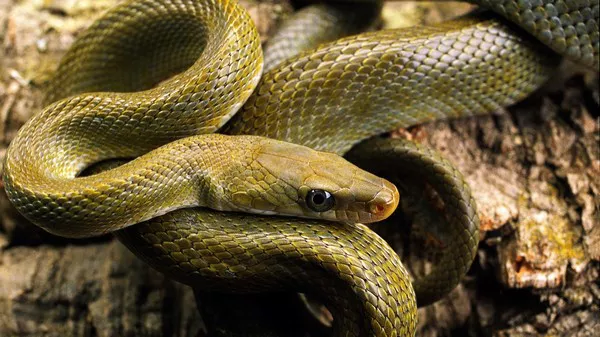When it comes to pet snakes, ball pythons are often recommended as one of the best beginner snakes. They are known for their docile temperament, relatively easy care requirements, and manageable size. However, as with any pet, there are pros and cons to consider before making a decision.
In this article, we will explore the characteristics of ball pythons, their care requirements, and the advantages and disadvantages of choosing one as a beginner snake.
Characteristics of Ball Pythons
Ball pythons (Python regius) are a species of non-venomous snake native to West and Central Africa. They are called ball pythons because they have a defensive behavior of curling into a tight ball when threatened. Ball pythons are a relatively small species of python, typically reaching between 3 and 5 feet in length.
One of the most appealing characteristics of ball pythons is their docile temperament. They are generally considered to be one of the more calm and easygoing species of snake. They are not aggressive, and their first instinct when confronted with a potential threat is to hide rather than attack.
Ball pythons are also known for their relatively slow metabolism and low activity level. They are not as active as other snake species, such as corn snakes or king snakes, and prefer to spend most of their time hiding in their enclosure.
Care Requirements for Ball Pythons
While ball pythons are relatively easy to care for compared to other snake species, there are still certain requirements that need to be met in order to keep them healthy and happy.
Enclosure
Ball pythons require a properly sized enclosure that provides enough space for them to move around comfortably. A 20-gallon tank is generally recommended for a juvenile ball python, while an adult should be housed in at least a 40-gallon tank.
The enclosure should also have a secure lid to prevent escape and provide adequate ventilation. Substrate such as aspen shavings or coconut fiber can be used to provide a comfortable substrate for the snake.
Temperature and Humidity
Ball pythons are ectothermic, which means that they rely on external sources of heat to regulate their body temperature. This means that the enclosure must have a temperature gradient, with a warm side and a cooler side, to allow the snake to regulate its body temperature.
The warm side of the enclosure should be kept between 88 and 92 degrees Fahrenheit, while the cool side should be between 78 and 80 degrees Fahrenheit. A heat lamp or under-tank heating pad can be used to provide the necessary heat.
Ball pythons also require a specific level of humidity, between 50 and 60 percent. This can be achieved by misting the enclosure with water, using a humidifier, or providing a water dish large enough for the snake to soak in.
Feeding
Ball pythons are carnivores and should be fed appropriately sized prey items. Juvenile ball pythons should be fed once a week, while adult ball pythons can be fed once every 7-14 days.
Live prey should be avoided, as they can injure the snake. Instead, frozen-thawed rodents can be used. The prey item should be no larger than 1.5 times the girth of the snake.
Advantages of Choosing Ball Pythons as Beginner Snakes
There are several advantages to choosing ball pythons as beginner snakes:
- Docile Temperament: As mentioned earlier, ball pythons are known for their calm and easygoing temperament. This makes them easier to handle and less intimidating for beginner snake owners.
- Manageable Size: Ball pythons are a relatively small species of python, making them easier to house and handle than larger species such as Burm
- Low Activity Level: Ball pythons are not as active as other snake species and prefer to spend most of their time hiding in their enclosure. This means that they require less exercise and stimulation, which can be a benefit for beginner snake owners who may not have as much experience providing enrichment.
- Relatively Easy Care Requirements: While there are still specific care requirements that need to be met, ball pythons are considered to be one of the easier snake species to care for. This can be beneficial for beginner snake owners who are still learning about snake care.
Disadvantages of Choosing Ball Pythons as Beginner Snakes
While there are many advantages to choosing ball pythons as beginner snakes, there are also some potential disadvantages to consider:
- Lifespan: Ball pythons have a relatively long lifespan, with some individuals living up to 30 years in captivity. This means that they are a long-term commitment and may not be suitable for owners who are not prepared for such a long-term commitment.
- Feeding: While feeding frozen-thawed rodents is relatively easy and safe, some beginner snake owners may still be uncomfortable with the idea of feeding their snake prey items. It is important to remember that snakes are carnivores and require a diet of whole prey items in order to thrive.
- Health Concerns: Like all animals, ball pythons can experience health issues. It is important for owners to be able to recognize signs of illness and provide appropriate veterinary care when necessary.
- Housing Requirements: While ball pythons do not require as much space as larger snake species, they still require a properly sized enclosure with appropriate heating and humidity. This can be a significant investment in terms of time and money.
Overall, ball pythons can be a great choice for beginner snake owners. They have a docile temperament, manageable size, and relatively easy care requirements. However, it is important to carefully consider the potential disadvantages, such as their long lifespan and specific housing requirements, before making a decision. With proper care and attention, ball pythons can make wonderful pets for both beginner and experienced snake owners alike.


























